Last year, we forecasted the growth of virtual reality in 10 major sectors, including education, military, video games, live events, real estate, healthcare, interactive desktop applications, social VR, project collaboration and engineering. Not only has VR development and market adoption in each of those areas been strong, but 2017 is seeing the continued expansion of virtual reality into new and existing markets.
With the global virtual reality business market is projected to reach $485 billion by 2025, opportunities for innovators and investors to capitalize on the next big technology wave have never been greater. Indeed, as VR targets untapped industries with innovative business ideas, 2018 promises to be the year of opportunity for forward-looking innovators.
Virtual Reality Technology
Before we explore the markets soon to be transformed by VR, let us take a brief look at the technology that will power the transformation.
Samsung Gear VR/VR 2
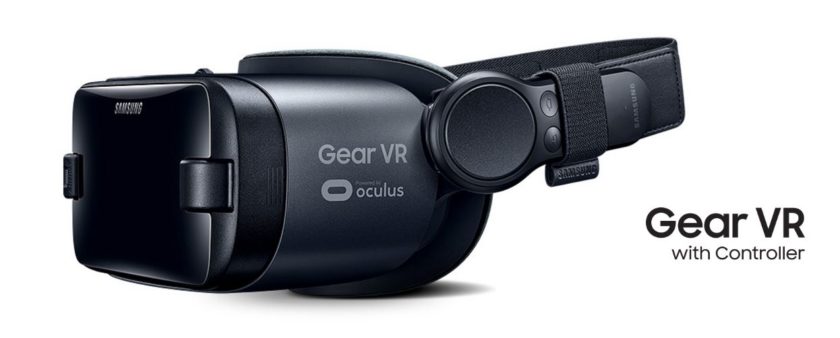
There is no confusion over the value of Samsung Gear VR in the VR marketplace — it is the best-selling VR headset. The $99 price tag, power-packed performance, and unbeatable comfort make it the ideal VR headset for newcomers and VR aficionados alike. It also lends itself perfectly to virtual reality business applications across a wide range of industries.
What is confusing for some is the difference between the Samsung Gear VR and the Samsung Gear VR 2. Officially, there is no such thing as a Samsung Gear VR 2. Some reviewers (present company included) have chosen to refer to the 2016 new-and-improved model as “VR 2,” but, all-in-all, there are only the pre-2016 models and the post-2016 models of Samsung Gear VR. Having said that, the “VR 2” (i.e. 2016 release) did include some helpful changes, including a more comfortable design, a wider field of view, and USB-C support for the now-defunct Galaxy Note 7.
Whatever you choose to call it, Samsung’s VR headset is the first pick for many developers looking for the ideal platform for VR business applications across a wide array of industries. It’s low price, power, and mobility perfectly suit the demands of diverse applications.
HTC Vive

Technically, the performance of the HTC Vive cannot be matched by lower-cost headsets. Even so, the $799 price places it far beyond the reach of many small businesses, not to mention the need for a beefed-up PC to run it on. Furthermore, the PC tether prevents the HTC Vive from being utilized in many of the applications we will be discussing in this article. It does, however, have a place in fields where performance is key, such as healthcare and engineering.
Oculus Rift
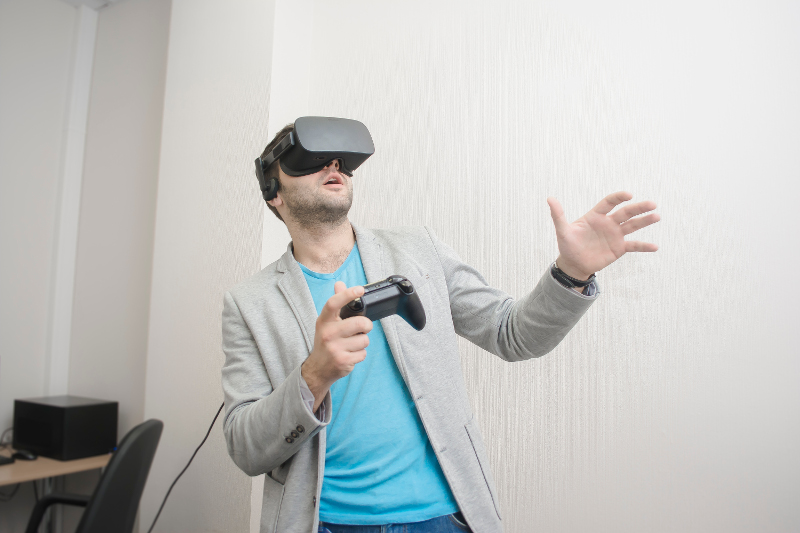
The Oculus Rift, like the HTC Vive, still has its umbilical cord and requires a hefty PC. The price — $600 plus $200 for a controller — also puts it on par with the HTC Vive. Price and PC aside, the Oculus Rift is the platform of choice for many developers when superior image quality is an objective.
Google Daydream View
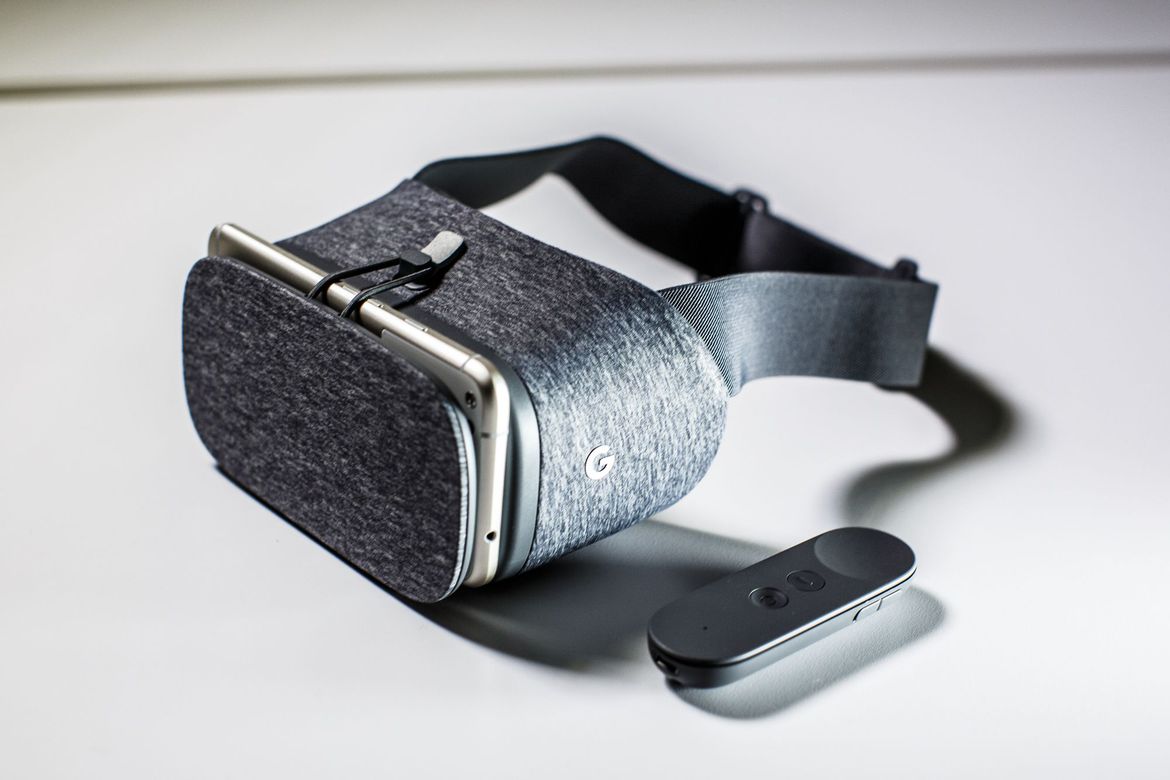
Google Daydream View - virtual reality headset.
Source: CNET.com
The Daydream View represents Google’s foray into the VR space. The $79 phone-based headset has yet to capture a sizeable share of the VR market, due in part to its limited compatibility. As of the time of this writing, the Daydream View is compatible with the following phones: Google Pixel, the Motorola Moto Z, the Huawei Mate 9 Pro, and the ZTE Axon 7 — none of which have the popularity of the Samsung Galaxy. Still, it is a viable, low-cost, and capable platform for hosting VR applications for a wide range of industries.
Google Cardboard

Google Cardboard for gaming
Source: Google Play
Google never intended the Cardboard to be a huge commercial success, and it hasn’t been. It has, however, done a fine job at introducing the general public to VR and AR technologies.
Does Cardboard still has a place in the VR ecosystem? You bet, for there are still plenty of applications for a free, or almost-free, viewer. Branded promotions, low-cost games, and schools represent just a few of the applications where Cardboard can still earn its keep.
Virtual Reality Markets for 2018
Among the industries that will foster opportunities for VR innovation well into 2018 and beyond are the following:
- VR Cafe
- VR Dating Services
- VR Marketing Agencies
- VR Escape Room
- VR Therapy Clinics
- VR Museums
- VR in Sports
- VR and the Five Senses
- VR in Libraries
- VR App Development
Let’s examine each and see how VR is transforming industries across the board and around the world.
1. VR Cafe
Technology has a tendency to rewrite the dictionary, and VR is doing just that. While the once-humble cafe used to be a quaint place where people gathered for light meals and a few drinks with friends, the Internet cafe, or iCafe, has replaced the sandwich with computers and cups of Espresso with Internet hotspots. OK, you might still get the Espresso. Following on the heels of the Internet cafe is the newest thing in social media, the VR cafe.
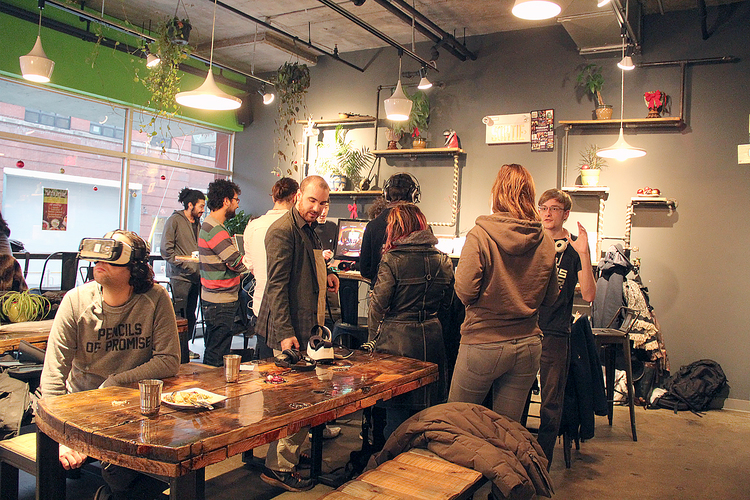
VR Cafe - Best VR Business Ideas
Source: vrrelated.com
Just as you might imagine, the VR cafe offers customers the opportunity to experience virtual reality in a public setting. But that is where the rules end. The uses for VR cafes are as varied as the uses for VR itself. Here are just a few of the services being offered by cafe owners:
- watching 360 degree, 3D movies
- playing VR games
- team-building exercises
- social media VR interaction
- training exercises
- 3D book readings
- meditation
Depending on the application, users’ VR experience may include:
- sitting
- standing
- walking tethered
- walking untethered
Movies and meditation are best experienced while sitting, but games and other exercises may involve standing or walking. Whether users are tethered and use a treadmill-type platform, or if they can move about within a 3D virtual environment, is not only determined by the application, but by the gear. Wireless devices, such as the Samsung Gear, lend themselves better to certain VR adventures than the high-performance, yet cabled, HTC Vive.
The golden era of VR cafe’s is now, as the public becomes interested in VR, but not necessarily interested enough to shell out hundreds of dollars for their own gear. VR cafes promise to be one of the most lucrative startup industries of 2018. Tune in next year and we will say we told you so.
2. VR Dating Services
The toughest decision for young men used to be deciding where to take their dates for the evening. Would the ever-safe dinner and a movie go over well, or would sushi and a tour of an alligator farm win a young lady’s heart? Thanks to VR dating, now one has to decide which planet is most suitable for the date.
Yes, it was inevitable. The very technology they said would bring people together seems to be keeping us apart. Be that as it may, the safety of VR environments may be just what some people are looking for when it comes time for that first date. Not only can couples “meet” without leaving the safety of their own homes, but they can experience the wonder of the cosmos together, or just tour the Great Pyramid. As VR dating technology develops, we can expect that couples will be able to create their own custom VR dating experiences, complete with a choice of romantic music and a select bottle of Chardonnay chilling in a virtual ice bucket.
What is the market for VR dating services? The field is wide open, but here are a few possibilities:
- inexperienced daters who want to develop basic dating skills before actually asking someone out
- persons who may wish to get to know someone within a discrete, yet entertaining environment
- persons who wish to get to know someone within the safety of an online experience, but with a richer experience than that offered by Facetime or messaging
- disabled or homebound persons who wish to experience new relationships
- anyone wishing to share a special VR experience with another person
But what happens if, say, a gentleman wishes to date more than one girl at a time without either of his dates being the wiser? Well, what happens in VR stays in VR, right?
3. VR Marketing Agencies
One industry that wasted no time adopting VR is marketing. While agencies have struggled to get beyond 360º video, VR technology is capable of providing much more to marketeers. The following list represents but a few of the opportunities for VR entrepreneurs and innovators to tap the huge marketing industry:
- 360º VR promotional videos
- creation of VR advertisements
- social media VR integration
- development of cloud-based VR-marketing platforms
- immersive product descriptions
4. VR Escape Room
The VR escape room is not only a promising VR business opportunity, it is also a market starving for products. As proprietors trade physical escape rooms for virtual experiences, the need for content is becoming painfully apparent. Not only are games designed for VR escape rooms in great demand, but so are other types of content.
Here is a very short list of content material that is needed to supply the emerging VR escape room industry:
- VR escape room games
- VR escape room team-building exercises
- VR escape room theme-based exercises
- VR escape room educational exercises
5. VR Therapy Clinics
The power of VR to transform industries is not limited to commercial enterprise. It has also proven to be a valuable tool in the diagnosis and treatment of certain psychological disorders. Virtual Reality Therapy (VRT), as it is known, is recognized by such renown institutions as Duke University School of Medicine.

Considering the number of persons diagnoses with mental disorders every year, the need for development in this area should be evident enough. Here are just a few of the disorders for which immersive therapy is proving to be helpful:
- PTSD
- depression
- autism
- phobias
- stress-related disorders
6. VR Museums
Museums are, above all, an immersive experience. Patrons buy tickets to not only to see artifacts, but to be immersed into a different time and place, whether that would be the Titanic, a WW2 battlefield, or an Apollo moon mission. And what better way to plunge into a sinking ship, a volley of cannon fire, or a spaceship than through VR? As more and more museums around the world embrace the power of VR, the need for content and the technology to deliver it will only grow.
Here are a few ways museums are using VR to augment their missions, and their bottom line:
- charging customers extra to view VR content while on a tour
- offering VR tours through the museum website
- offering live VR presentations of special events, such as archeological digs
7. VR in Sports
If there is one place where VR seen slow adoption, it is the ball field. Of course, sports fans have always been a conservative lot, but with major league baseball offering live VR streaming, it is safe to say the game is on.
The growth opportunities in sports are actually tremendous. Here are a few ways VR sports applications can take the field:
- live VR streaming to game attendees
- 3D VR playback of previous games
- enhanced views of the game for sportscasters and commentators
- player training
8. VR and the Five Senses
We are not there yet, but researchers are well on the way to making VR a full-body experience. VR can already immerse the user into an aural and visual-rich experience, but that leaves three senses uninvolved. Researchers are exploring ways to affect the sense of taste and smell, as well as sensations of heat and cold.
Though this facet of VR technology is in the embryonic stage, it is never too early to innovate, especially in a field as promising as VR.
As VR technology offers tangible advances in immersive taste, immersive smell, and immersive touch, the possibilities are, for a lack of a better word, mind-blowing. Consider a few of the applications full-body immersive VR will ultimately bring forth:
- more realistic games
- accurate remote exploration
- the ability sample foods and aromatic products online
- authentic tours of natural settings
No, we are not likely to enjoy these VR experiences any time soon. But for those innovators who are the first to make it happen, the market is there for the taking,
9. VR in Libraries
Believe it or not, but libraries still exist. You know, those quiet repositories of the antique data-storage medium, better known as a book? Not only do libraries still attract readers, researchers, and students, but they are using virtual reality to better serve their users.
The potential for VR to enhance libraries must be significant — Facebook has donated 100 sets of Oculus Rift headsets, complete with controllers and computers, to libraries throughout California.
And VR can do more than enable library patrons view educational videos in 3D. VR has the power to re-define what a book is. Brian May, guitarist for the rock group Queen, has taken it upon himself to release what must be the first virtual book about a rock band. His book, Queen in 3D, includes a collection of stereo images of the band. Now, if a rock star can innovate in this area, VR developers have no excuse for not doing so, as well. Of course, May does hold a PhD in Astrophysics, but that is beside the point.
Here are a few applications for VR in libraries. This list is sure to grow as the technology matures even further.
- providing a platform for 3D immersive videos
- facilitating 3D books, such as May’s
- enabling readers to read non-3D books in an immersive environment where distractions are minimized
- enabling the physically handicapped to utilize learning materials
10. VR App Development
The explosion of VR-related businesses will not happen without someone to write the applications. In fact, the need for VR app development has never been greater, nor have the opportunities been more exciting.
The variety of markets just waiting to be transformed by virtual reality are too numerous to list. We have discussed a few VR business applications here, but many, many more will soon be penetrated or disrupted by innovative VR developers. A short list of opportunities could include:
- VR mobile app development
- VR content development
- Custom VR-based training software
- VR-based training software
- VR add-ons for existing applications
A complete list of VR business opportunities would number in the hundreds, or thousands. Each represents a market to be captured, and a portion of the $485 billion pie.
How AppReal-VR Can Help?
Virtual reality startup, VRB, was purchased by Samsung for $5.5 million. While not every VR business startup can expect to be acquired by a tech giant, many become giants in their own right by disrupting age-old markets and creating new ones. Success does not come by accident, but by careful planning. That’s where AppReal-VR comes in.
AppReal-VR is a world-class leader in outsource development of VR technology, from mobile apps to games to VR-related business applications. There is nothing in your plan that we can’t handle. With 6 R&D labs across Western Europe, we have the resources in house to take your application from concept to market.
Why not call us, today, for a no-cost consultation?

 (13 votes, average: 4.15 out of 5)
(13 votes, average: 4.15 out of 5)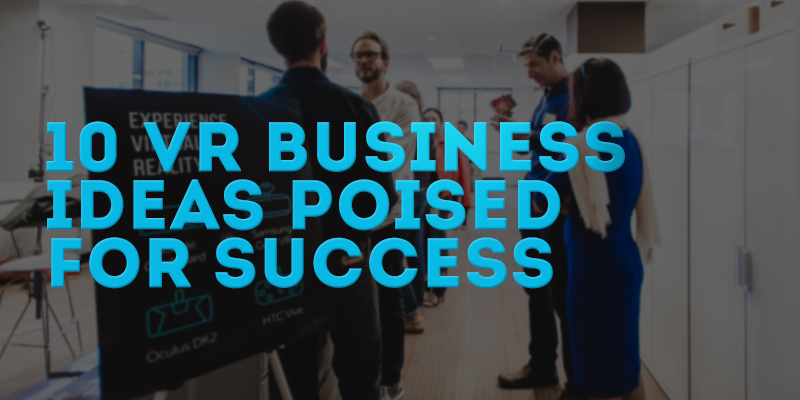
HI.. iam interested start a business with vr.. how do I do that ., thank you..
Hello.. iam interested start a business with vr.. how do I do that .. please give sone information ., thank you..